How to Hide Columns in Excel – 6 Ways With Easy Steps
For several decades, Excel has proven to be an indispensable tool for data analysts, providing robust capabilities to organize and present data. But sometimes, you need to tidy up your spreadsheet or focus on specific data. That’s where hiding columns comes into play. This saves you the need of deleting a specific column, and then re-doing it, just for a specific purpose.
Table of Contents:

In this article, we’ll go over some ways you can use to hide columns in Excel, according to your requirements and needs.
Hide Columns in Excel Using the Context Menu
This is the main method you should use to hide columns easily in Excel. Here’s how to do it for both one column and multiple:
For a Single Column
- Click on the letter on top of the column to select it in its entirely.
- Right click and click on ‘Hide.’
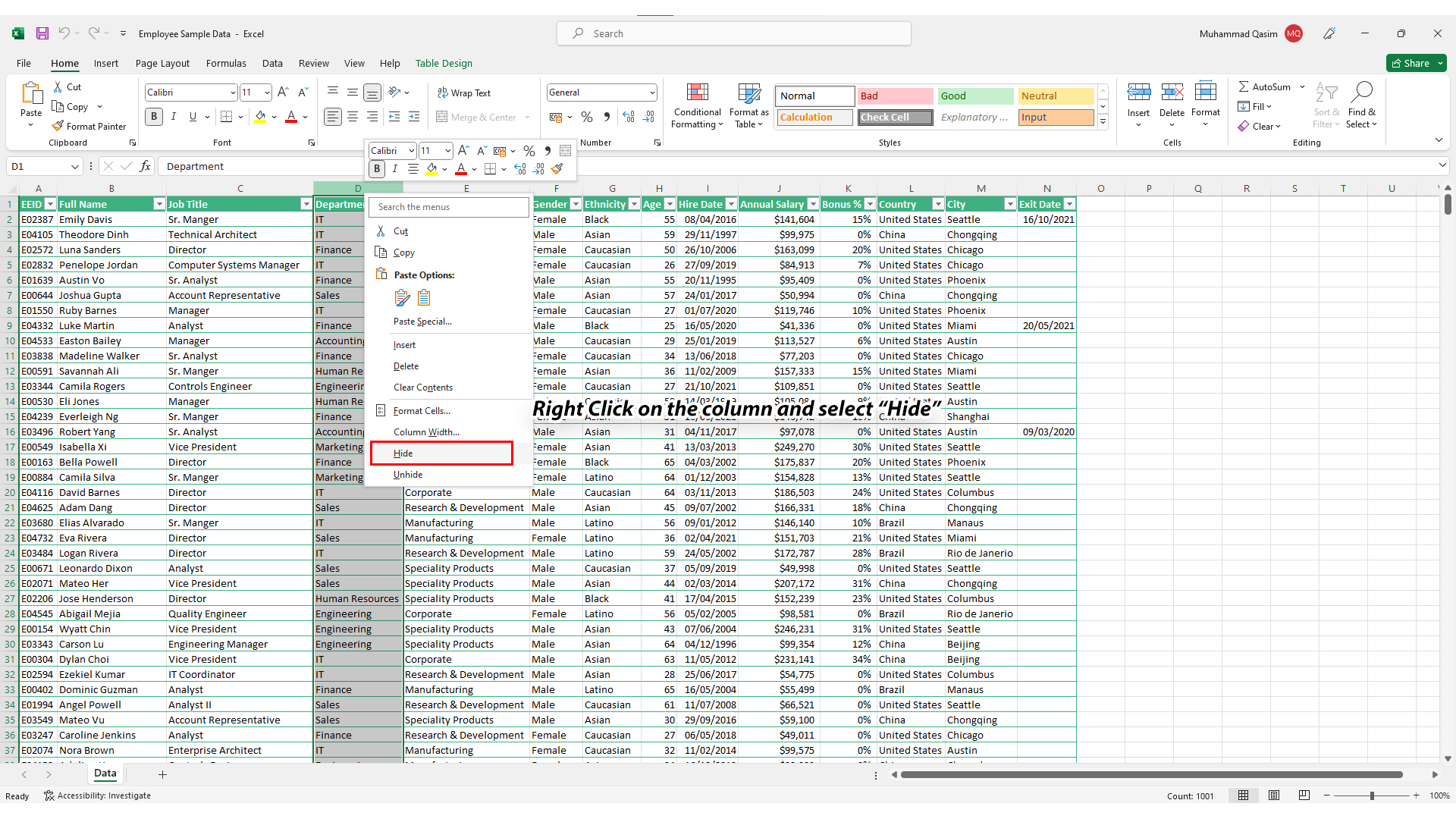
Hiding columns via context menu - Now, your preferred column is hidden, and there’ll be double lines between the adjacent columns. These double lines indicate there is a hidden column in-between them.
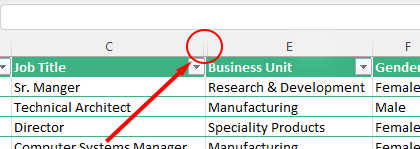
For Multiple Columns
- Adjacent Columns: Click on the letter of the first column, and then, by holding the Shift key, click on the last column. This will select all the columns in between.
- Separate Columns: Click on the letter of the first column while holding the Ctrl key, then click on each of the columns you want to select.
- After you’ve made these selections, simply right-click on any column while pressing the Shift/Ctrl key, and click on ‘Hide.’
Do note that hiding columns doesn’t delete your data, rather it simply collapses it between two adjacent columns. This is why a lot of people would prefer it using over simply deleting the entire row.
Alternate Methods
Now, we’ll take a look at some alternatives to the main method described previously. These are also easy to follow and cover a wide range of different use cases.
1. Using the Keyboard Shortcut
Excel also has a simple, straightforward shortcut for hiding columns:
- According to your preference, choose the columns you wish to hide using the method listed above.
- Now, press “Ctrl+0” (Ctrl+[zero]) on your keyboard.
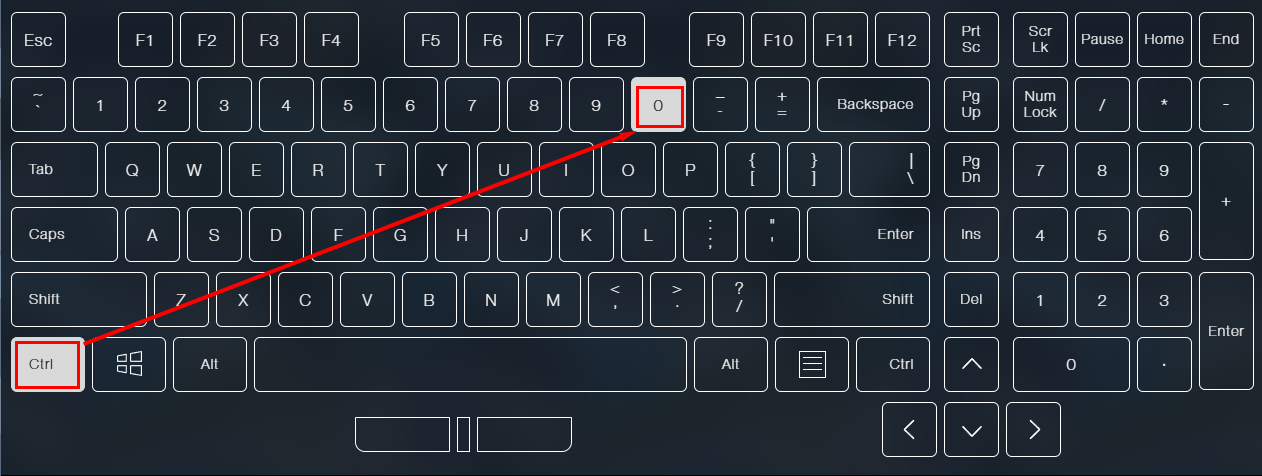
Keyboard shortcut for hiding columns in Excel - This will immediately hide the selected columns.
2. Using the Excel Ribbon
- Select the columns you want to hide.
- Now in the Excel ribbon, under the ‘Home‘ tab, look for ‘Format.’
- Click on it, and in the dropdown menu, look for ‘Hide & Unhide‘
- Click on this, and tap on ‘Hide Columns‘

Hiding Columns Using the Excel Ribbon - Now, your desired columns are hidden. Using the same way, you can also unhide these columns by clicking “Unhide Columns.”
3. Using Visual Basic for Applications (VBA)
A lot of people who have been familiar with the Office Suite for quite sometime might know a bit about VBA too. It is essentially a programming language that is mainly used to perform automated tasks quickly. For hiding columns in Excel using VBA, follow the steps down below:
- In Excel, open your desired sheet and press ‘Alt+F11‘ to open the VBA editor.
- Click ‘Insert‘ from the menu on the top, and then select ‘Module‘ from the dropdown list.
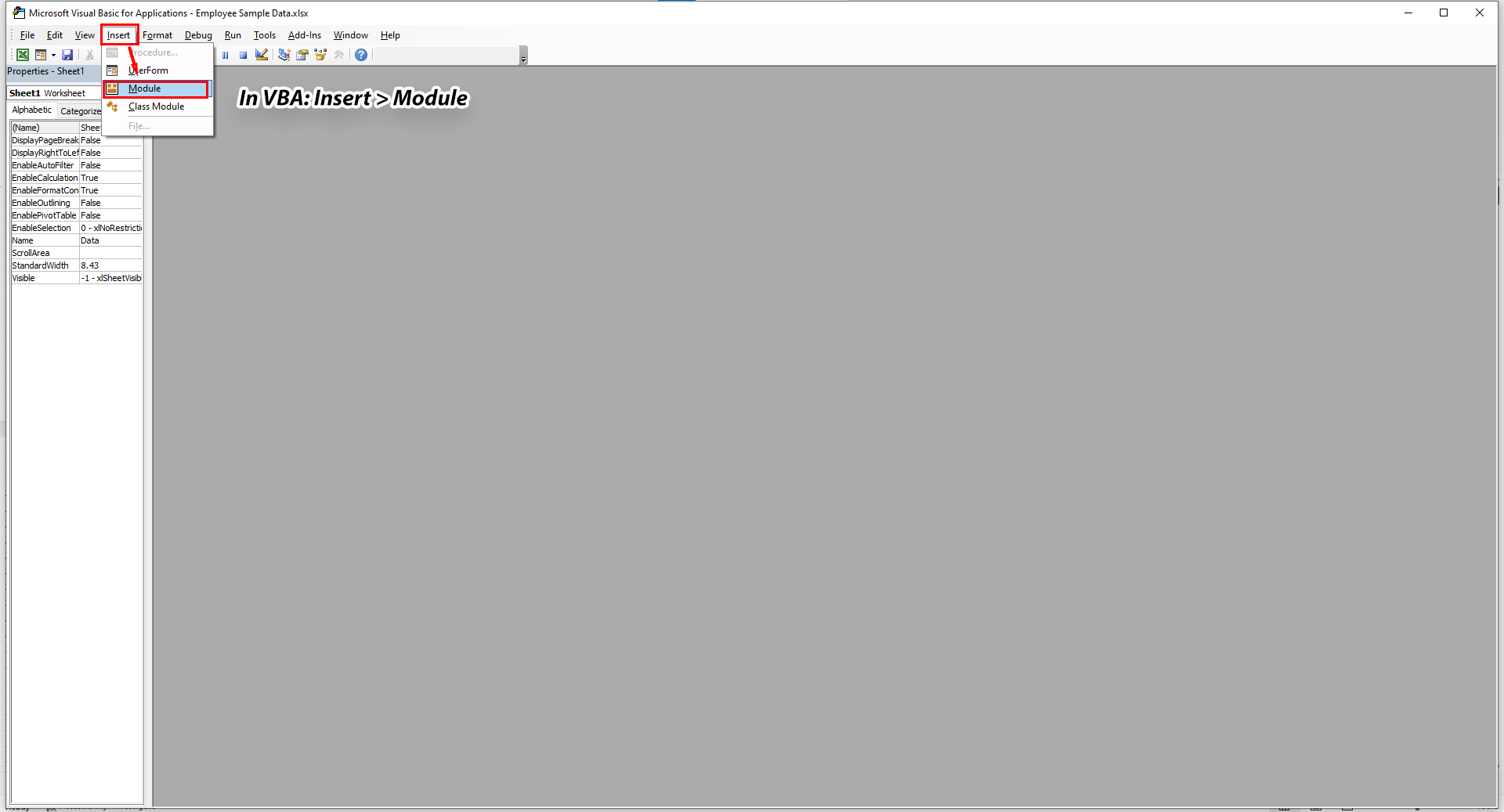
Inserting Module in VBA - Then, enter the following code:
“Sub Hide_Columns() Columns(“A:C”).Hidden = True End Sub”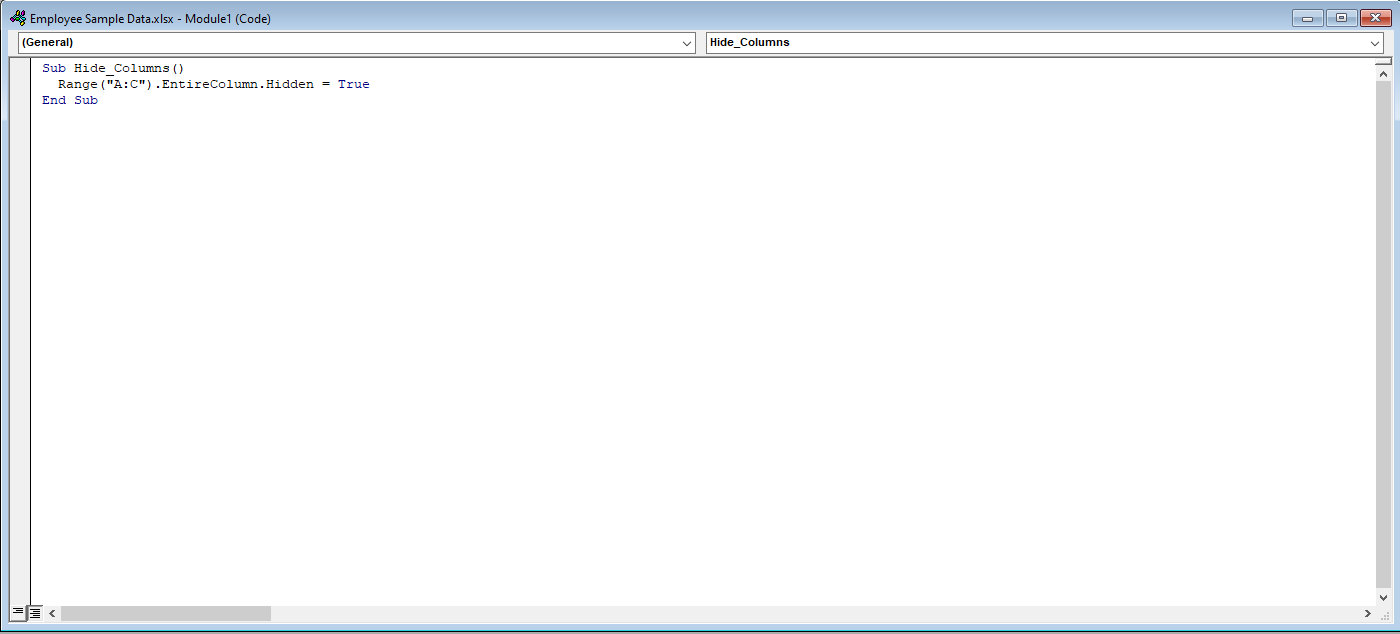
The VBA code - Close the VBA editor and press ‘Alt+F8‘ to open the Macros dialog box.
- Select the ‘HideColumns‘ macro from the list and click ‘Run.’

Selecting the “HideColumns” Macro - The columns listed will now be hidden. This method can be used to eliminate the manual selection, and easily hide large amounts of columns with a single command.
4. Using the Group Feature (Adjacent Columns)
If there are alternate, or adjacent specific columns that you need to hide repeatedly, it’s best to use the group feature:
- On your sheet, select the desired columns you want to hide (For this step, the columns need to be adjacent).

Selecting adjacent columns - Now, press Shift + Alt + Right Arrow simultaneously. This will group, and hide all your selected columns.
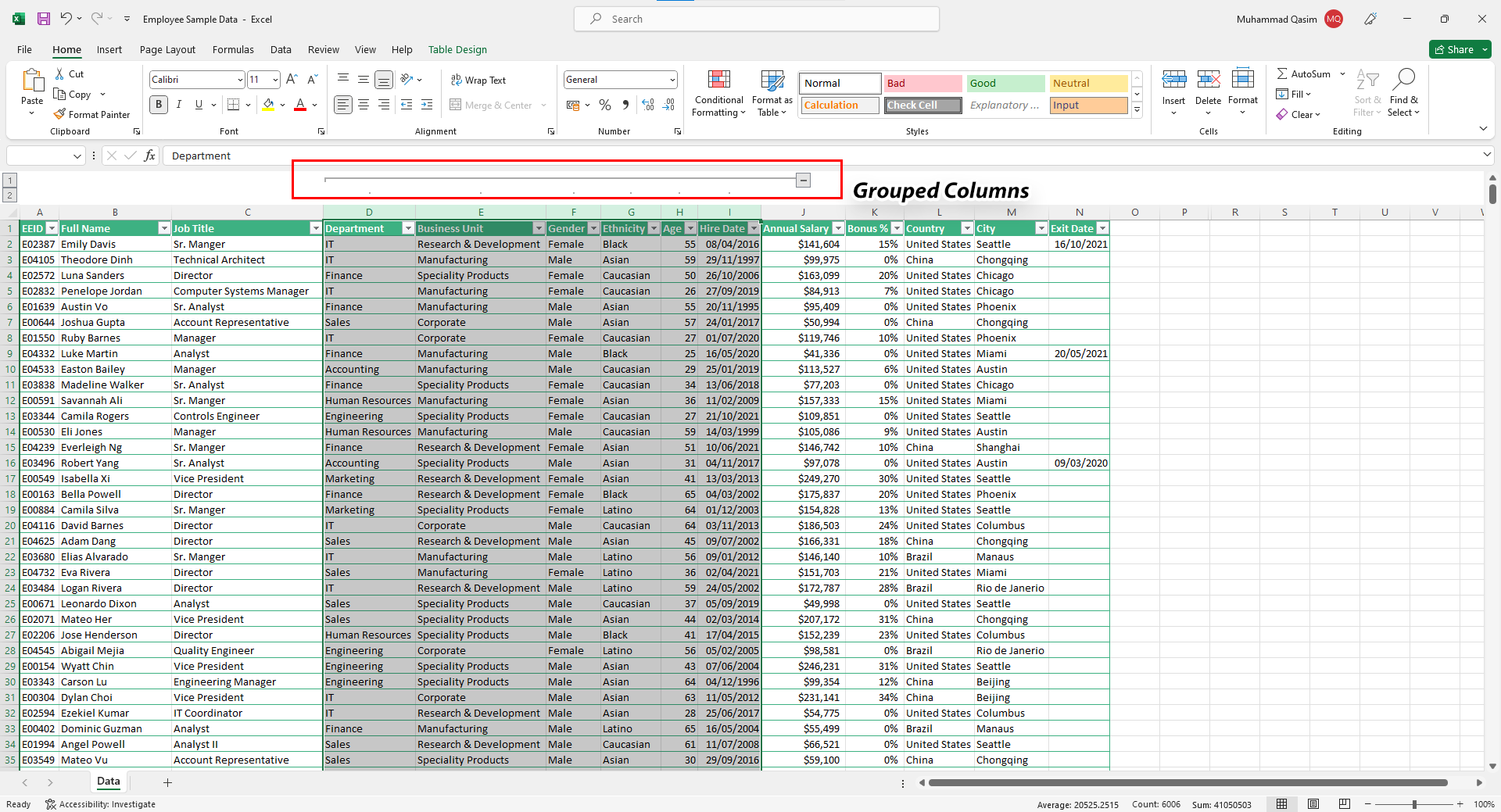
Grouped (Expanded) Columns - Press 1, or ‘+’ to unhide these columns, and 2, or ‘-‘ to do the opposite.
- If you need to ungroup these columns, select the columns first. Then, on the Data tab, under the Outline option, click Ungroup.
5. Hiding Specific Cells
Let’s say you don’t want to hide an entire column, and simply need to hide specific cells of data. For this, follow the steps listed down below:
- Select the cells you want to hide.
- Right click and select “Format cells.”
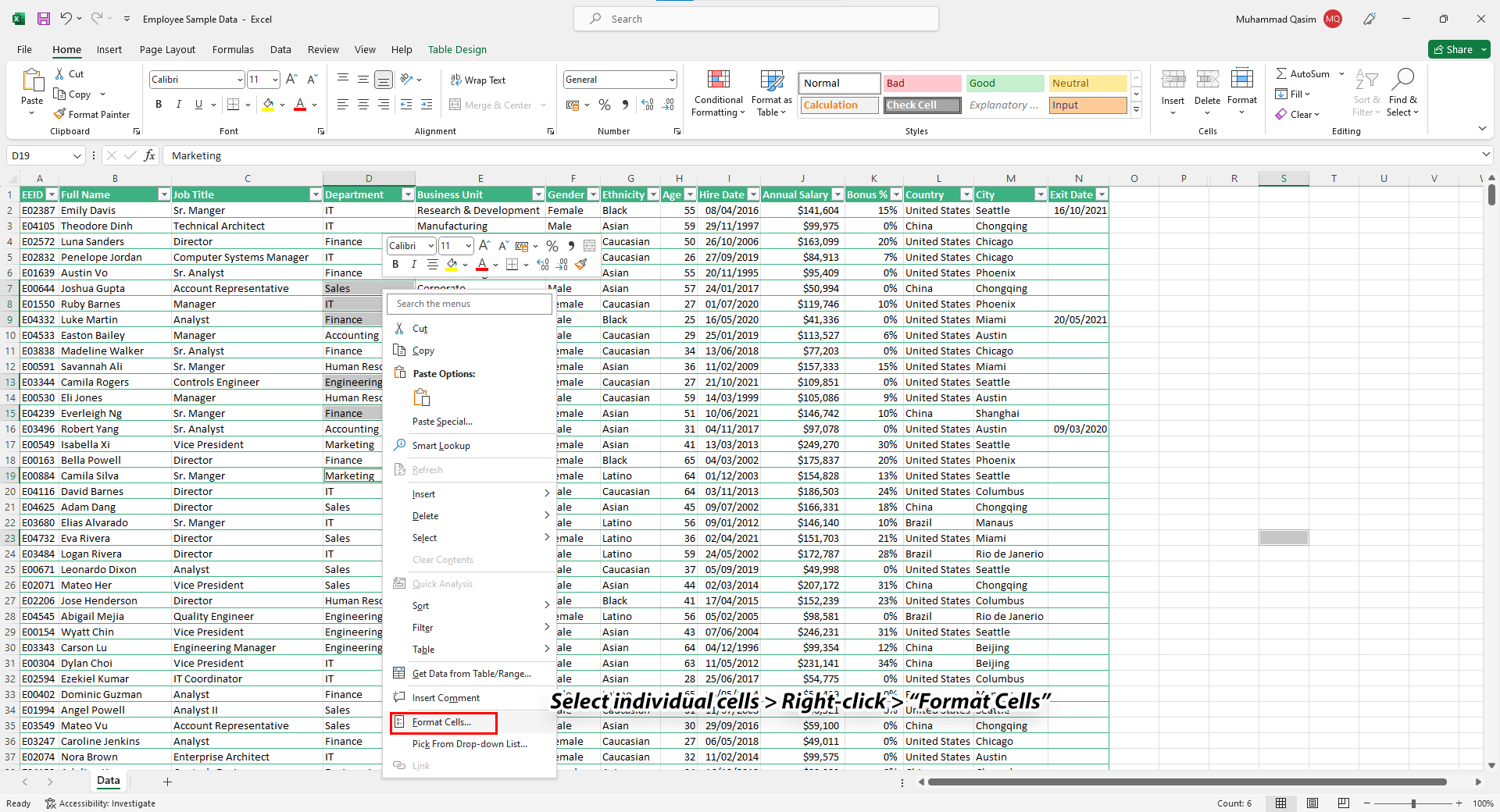
Hiding individual cells - Select ‘Custom‘
- Write the code ” ;;; ” and press ‘OK.’

The code for hiding individual cells - Now, these specific cells will be hidden.
Why Hide Columns in Microsoft Excel?
Given that Excel provides users the capacity to handle a massive number of columns – over 16,000 to be exact – effectively managing such vast amounts of data can pose significant challenges, especially if the data in question is sensitive. The feature to hide columns becomes indispensable in such scenarios for multiple reasons.
- Data Entry and Comparison: Often, there might be a need to enter data or compare various columns while minimizing distractions from irrelevant data. Hiding the unnecessary columns can streamline the process and enhance productivity by allowing you to focus solely on the relevant columns.
- Presentation and Privacy: Presenting data, particularly in front of external parties, may warrant selective visibility of data to protect sensitive information. The option to hide specific columns helps to achieve this. It should be noted that the alternative to this – deleting the column – can be labor-intensive, time-consuming, and in certain circumstances, not feasible.
- Improving Readability: There might be instances where a spreadsheet contains columns of data that are rarely accessed or referenced. Such columns can clutter your view and make the frequently accessed data hard to locate. Hiding such columns can improve the overall readability of your spreadsheet, making your daily tasks less cumbersome and more efficient.
How to Unhide Hidden Columns
As mentioned before, the hidden columns have an indicator, in shape of double lines between two columns that showcases that there are columns hidden between them. To unhide these,
- Select two adjacent columns between which your the hidden columns are located.
- Right-click, and tap on Unhide.
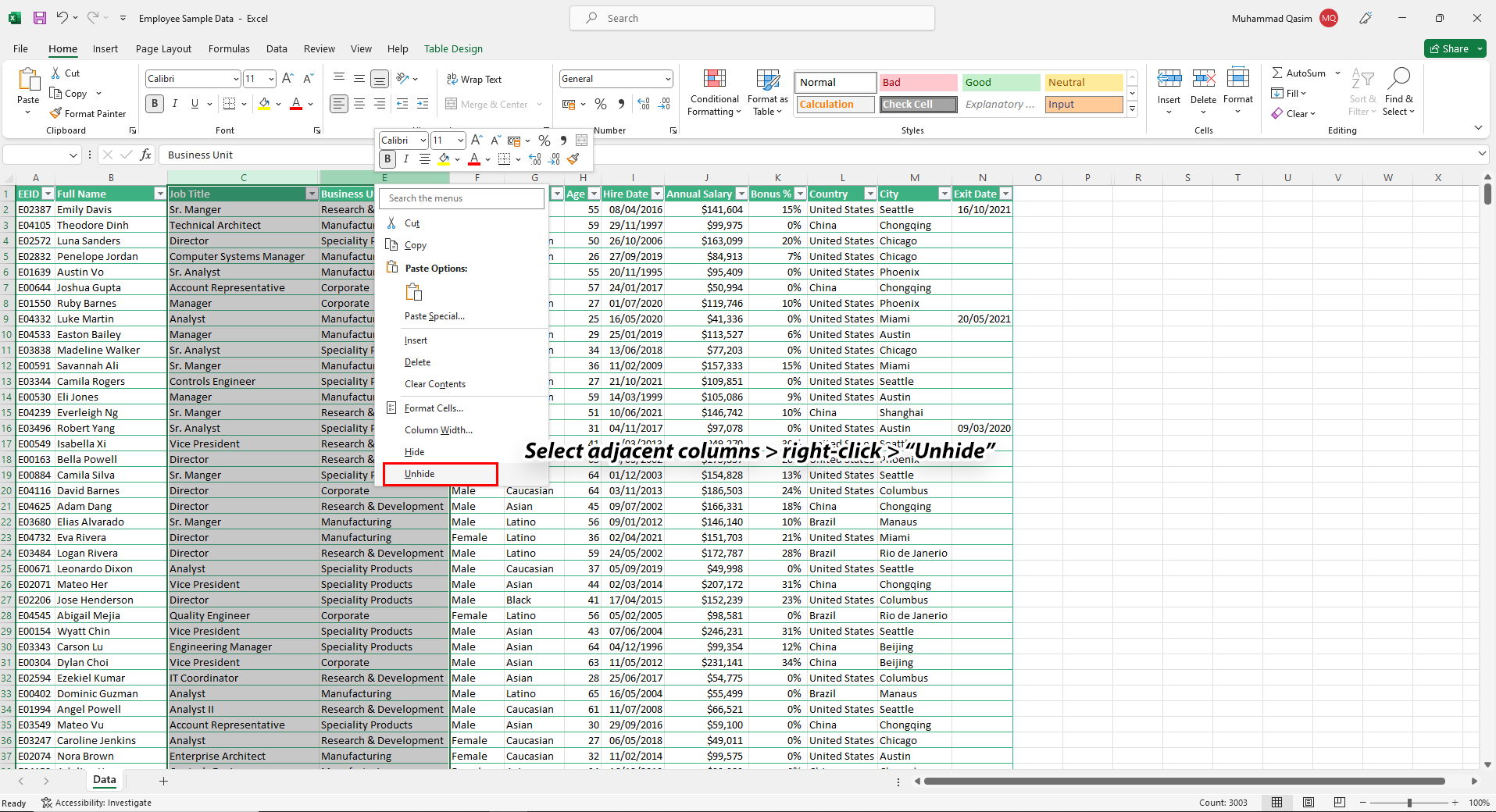
Unhiding columns in Excel - Now, the columns will be unhidden.
FAQs
Hiding specific columns does not remove or relocate the data in them. The data is still there, but it is simply not visible. This means that you can still access the data if you need to, but it is not shown on the screen.
There is no “best way” to hide columns in Excel, as it depends on your specific needs and requirements. However, if you are new to Excel or have a relatively small dataset, the context menu method is a good option, as it is the most straightforward and easy to understand.
This could be due to having too much data in the spreadsheet. Try closing unnecessary applications to free up memory on your system.
This can happen if the entire worksheet is selected when the “unhide” option is chosen. Try selecting only the columns adjacent to the hidden ones and then choose “unhide”.
This could be because the worksheet is protected. You would need to unprotect the sheet (Review > Unprotect Sheet) to be able to hide/unhide columns.
 Reviewed by
Reviewed by 




